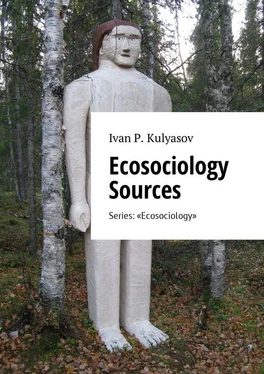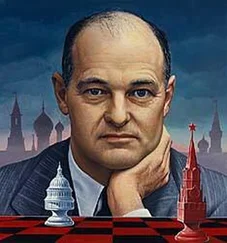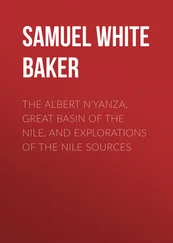I. Kulyasov - Ecosociology Sources. Series - «Ecosociology»
Здесь есть возможность читать онлайн «I. Kulyasov - Ecosociology Sources. Series - «Ecosociology»» — ознакомительный отрывок электронной книги совершенно бесплатно, а после прочтения отрывка купить полную версию. В некоторых случаях можно слушать аудио, скачать через торрент в формате fb2 и присутствует краткое содержание. ISBN: , Жанр: Прочая научная литература, на английском языке. Описание произведения, (предисловие) а так же отзывы посетителей доступны на портале библиотеки ЛибКат.
- Название:Ecosociology Sources. Series: «Ecosociology»
- Автор:
- Жанр:
- Год:неизвестен
- ISBN:9785449009913
- Рейтинг книги:5 / 5. Голосов: 1
-
Избранное:Добавить в избранное
- Отзывы:
-
Ваша оценка:
- 100
- 1
- 2
- 3
- 4
- 5
Ecosociology Sources. Series: «Ecosociology»: краткое содержание, описание и аннотация
Предлагаем к чтению аннотацию, описание, краткое содержание или предисловие (зависит от того, что написал сам автор книги «Ecosociology Sources. Series: «Ecosociology»»). Если вы не нашли необходимую информацию о книге — напишите в комментариях, мы постараемся отыскать её.
Ecosociology Sources. Series: «Ecosociology» — читать онлайн ознакомительный отрывок
Ниже представлен текст книги, разбитый по страницам. Система сохранения места последней прочитанной страницы, позволяет с удобством читать онлайн бесплатно книгу «Ecosociology Sources. Series: «Ecosociology»», без необходимости каждый раз заново искать на чём Вы остановились. Поставьте закладку, и сможете в любой момент перейти на страницу, на которой закончили чтение.
Интервал:
Закладка:
In the 1920s, the Chicago school ecosociologists received a few seats on the Committee for Local Community Studies. Participants of this inter-disciplinary research organization also included economists, philosophers, anthropologists, political experts and psychologists. They elaborated a common conceptual framework, conducted joint empirical research and theorized, developed recommendations for business and municipal authorities.
However, socio-economic crises and the subsequent Great American Depression of the 1930s formulated other national priorities. As a result, the socio-ecological concept of the Chicago school of sociology was used as a method without being developed into an independent discipline.
Attempts to rethink the socio-ecological theory made by Park’s followers were aiming to overcome the biosocial dualism of Park’s concept and make social-ecological theory more sociology sounding. Louis Wirth (1897—1952), having constructed a purely sociological theory of urban life, proposed to get rid of eclectics that allowed various interpretations of urban processes by scientists representing different disciplines. Interaction / communication continue to be the main characteristic of social processes and a driving force behind the development of local community.
To overcome the excessively broad theoretical orientation of the socio-ecological concept, he proposed a thesis that interaction becomes intensive with a large congestion of people on a constrained territory. He suggested a method for distinguishing between urban and rural communities:
– The first characteristic of urban population relates to its high density (the ratio of the territorial size to the number of residents).
– The second characteristic is the diversity of population (a large number of different social groups).
– The third is to prevailing social relationships (communal in a rural and social / mixed – in an urban community) 17 17 Wirth L. Social interaction: The problem of the individual and the group. 1939. Vol. 44. p. 965—979.; Human ecology. 1945. Vol. 50. №6. p. 483—488.; Community life and the social policy. Chicago. 1956.
.
Therefore, the space-temporal aspect remained a characteristic of society, while ecosociology came to be perceived as a science that measures and describes the social environment.
To define the main ecosociological categories, McKenzie pointed out an ecological organization as a spatial body of the population in a local or the global community. He argued that ecological things dominate all other characteristics because they all are a result of space-temporal relationships. Accordingly, he gave priority to studying and theorizing on the phenomenon of the ecological community 18 18 McKenzie R.D. Social ecology // Encyclopedia of Social Sciences. New York: Macmillan, Collier. 1937. Vol. 5. p. 314—315.
.
The followers of the socio-ecological concept maintained and continue to maintain that all social processes are in fact ecological. This understanding was to be the foundation for all social sciences, as the social institutes and structures are built on a space-temporal foundation, emerge and exist in accordance with the changing natural conditions, and nothing exists beyond these conditions.
This approach was enhanced by the fact that such socio-ecological methods as zoning and social mapping were successfully used for identifying and verifying the correlation between various social variables, which at first glance were not interrelated. Moreover, the use of these methods and conceptual approaches made possible generalized descriptions of various multi-variable cases, giving at least an understanding of functional, if not causal dependence.
An effective use of the socio-ecological method can be also explained by the level-based approach, which is similar to the principle used in system analysis when the phenomenon of a local community (social organism) being examined is analyzed in its interrelation with its higher (macro) and lower (micro) level. The lower level is the individual and the higher level is represented by social “compositions” consisting of various communities united into municipalities.
However, causal links of social organisms with their habitat and issues relating to optimal life support were not yet studied by ecosociology. Therefore, beginning with the mid-1930s, the abstract character of the ecosociology’s space-temporal functionalism came under criticism from representatives of the socio-cultural school, who emphasized the dependence of natural resource use on cultural traditions, values, symbols and norms.
Milla Aissa Alihan proposed a new vision of society and started working on a methodology for analyzing the social sphere within the framework of the already existing discipline – urban sociology. Three main variables – social standing (status), urbanization level (population density) and degree of segregation (multiplicity of social groups) – were identified. A city was described as a subsystem comprising greater territories and larger communities. In doing so, researchers were using data obtained from a census of urban population. On the one hand, this allowed analysis of cities rather than urban communities. On the other hand, this made possible, based on the statistical data received, a classification of subsystems (local communities). The result obtained could be rechecked some time later (sociological monitoring) to see social dynamics. This also enabled researchers to reasonably theorize on social organization as the main result of evolution 19 19 Alihan M.A. Social ecology: A critical analysis. New York: Columbia University Press. 1935.
.
Amos Henry Hawley (1910—2009), further developing the socio-ecological concept, was of the opinion that a community is an ecosystem (a territorial local system of interrelations between its functionally differentiated parts). Ecosociology may view a community as a population united by the similarity of its component organisms (commensalism). Human population is included into the ecosystem due to a mutually useful interaction with dissimilar organisms (symbiosis).
The focus of attention of the researcher-sociologist now turns to the functional socio-ecological system that develops in the process of interaction with an abiotic environment and other biotic communities. During such interaction, a specific social organization with specific characteristics is formed 20 20 Huwley A. Human ecology: A theory of community structure. New York: Ronald Press Company. 1950.
. Despite the fact that a civilized man prefers adapting nature to his needs rather than adapts to nature, and tries to irreversibly change nature’s characteristics and processes for his benefit, nature has resilience and is capable of influencing humans. It also can perform irreversible acts on humans.
Finally, as the socio-ecological theories, approaches and methods are developed, social atomism is substituted with organizational functionalism; attention is focused more on the functioning of a social organization rather than on the driving forces and causes of this process or space-temporal forms of its manifestation. A description of this mechanism was made by Otis Dudley Duncan (1921—2004) and Leo Francis Schnore , who used the socio-ecological complex theory. The socio-ecological complex comprises four components:
1) Population (local human population);
2) Nature environment (abiota + biota + human populations);
3) Technology (things + means of production + culture of production);
4) Organization (social institutes and structures) 21 21 Duncan O.D. From social system to ecosystem // Sociological Inquiry. 1961. Vol. 31. p. 140—149.; Social organization and the ecosystem // Modern Sociology. Ed. R. Faris. Chicago: Rand McNally. 1964. p. 36—82.; Duncan O.D., Schnore L.F. Cultural, behavioral and ecological perspectives in the study of social organisation // American Journal Sociology. 1969. Vol. 65. №2. p. 132—136.
.
Интервал:
Закладка:
Похожие книги на «Ecosociology Sources. Series: «Ecosociology»»
Представляем Вашему вниманию похожие книги на «Ecosociology Sources. Series: «Ecosociology»» списком для выбора. Мы отобрали схожую по названию и смыслу литературу в надежде предоставить читателям больше вариантов отыскать новые, интересные, ещё непрочитанные произведения.
Обсуждение, отзывы о книге «Ecosociology Sources. Series: «Ecosociology»» и просто собственные мнения читателей. Оставьте ваши комментарии, напишите, что Вы думаете о произведении, его смысле или главных героях. Укажите что конкретно понравилось, а что нет, и почему Вы так считаете.




![Джеймс Купер - Пионеры, или У истоков Саскуиханны [The Pioneers, or The sources of the Susquehannah]](/books/395797/dzhejms-kuper-pionery-ili-u-istokov-saskuihanny-t-thumb.webp)







